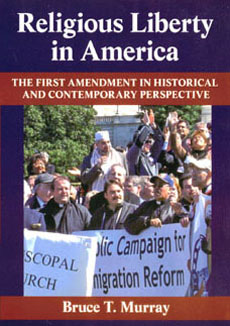‘When man bites dog’ maxim in the context of religion in the news
Survey results say religion coverage ‘too sensational’
Most Americans say media coverage of religion is “too sensationalized”; and less than one-fifth of reporters consider themselves “very knowledgeable” about religion.
— This is the top summary of a new survey by the USC Annenberg School of Communication and the University of Akron’s Roy C. Bliss Institute of Applied Politics.
The survey is based on a random sample of 2,000 Americans and a parallel survey of 800 reporters. Among the results of the survey:
- One-quarter of the public is “very interested” in religion coverage, while one-fifth of reporters said the issue comes up frequently in their work.
- Two-thirds of the public said there is too much sensationalism in religion coverage – a view held by less than one-third of reporters.
- Half of the reporters surveyed said their biggest challenge in covering religion is a lack of knowledge about the subject.
In the “Sightings” column, the University of Chicago’s Martin Marty Center commented positively on the survey, but also noted ironically that the survey’s own headline was “sensational.”
“Why sensationalized? Because religion on the media usually contrasts with what the typical member of the public sees. The citizen’s own eyes usually see prosaic, routine, passive, peaceful expressions of people next door or down the block. Yet the media remind them that abuse scandals, tribal wars, embezzlements, wild (to them) religious ideas, and the sensational in general – usually occurring at a distance – make news.”
In other words, the old truism in the news business: When dog bites man, it’s not news. But when man bites dog, that’s news.
Many of the general conclusions of the USC-Akron study are similar to what the Pew Charitable Trusts determined in the previous decade. As part of the Pew Forum on Religion and Public Life, veteran journalist Bruce T. Murray produced a primer for journalists entitled Religious Liberty in America: Navigating the First Amendment in the Newsroom and Beyond. The book was subsequently updated and published by the University of Massachusetts Press as Religious Liberty in America: The First Amendment in Historical and Contemporary Perspective.

In this volume, Murray surveys religion and politics in America for the past 400 years – focusing especially on contemporary issues such as religious symbols in the public square, the Supreme Court and the “culture wars.” Murray re-examines the debates and distills the volumes of commentary and case law they have generated. He analyzes not only the changing contours of religious freedom but also the phenomenon of American civil religion, an outlook grounded in the notion that the American experiment is sanctified by a higher authority.
Throughout the book, Murray connects the past and present, tracing the historical roots of contemporary controversies. He considers why it is that a country founded on the separation of church and state remains singularly religious among nations, and he concludes by showing how the Supreme Court’s thinking about the religious liberty clauses has evolved since the late eighteenth century.
The Association of College and Research Libraries named Religious Liberty in America an “Outstanding Academic Book.
“This book is a splendid presentation of the First Amendment – with civil religion as a parallel theme – especially as presently related to so many issues in American political and religious life. Other books on these issues have been appearing of late, but none as clear and thorough as this one.”
— G.H. Shriver, Professor Emeritus, Georgia Southern University
Purchase Religious Liberty in America on the University of Massachusetts Press Web site.
Find out more about the author here.

